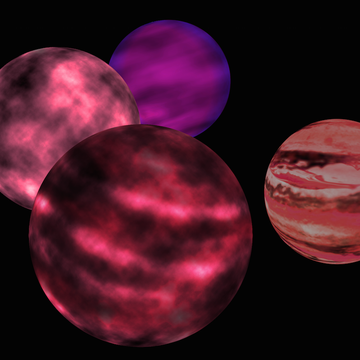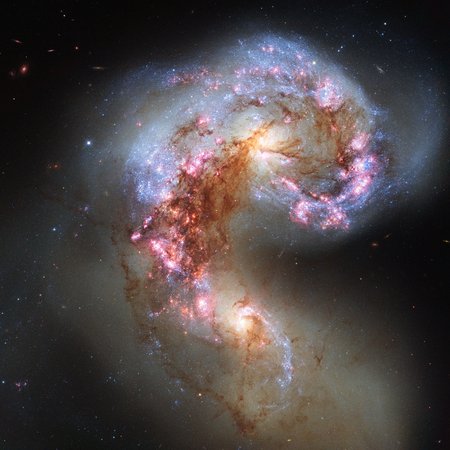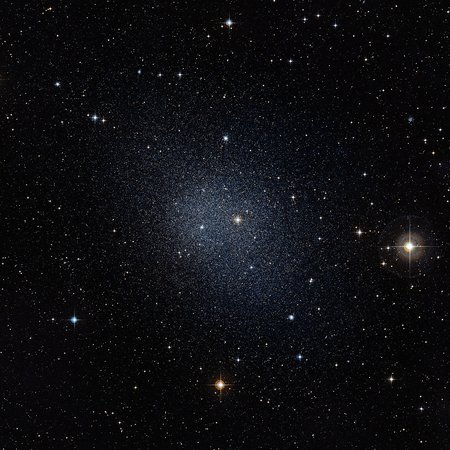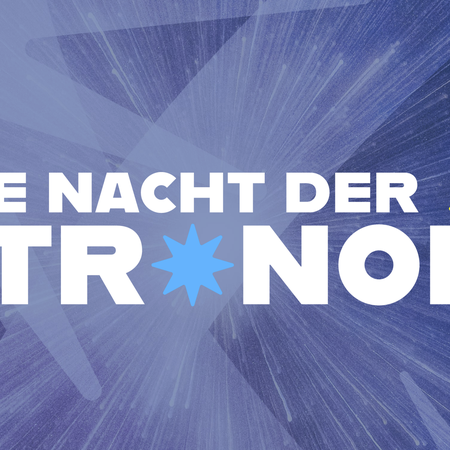Virtual lecture: Babelsberg Starry Night on 18th July 2024
The next talk of the Virtual Babelsberg Starry Nights of the Leibniz Institute for Astrophysics Potsdam (AIP) on the topic “News from the solar neighbourhood" (German) by Dr. Ralf-Dieter Scholz will be broadcast on the YouTube channel “Urknall, Weltall und das Leben” (Big Bang, Universe and Life) from Thursday, 18. July 2024.
How many brown dwarfs are there in the solar neighbourhood? Are they all known yet? Dr Ralf-Dieter Scholz will address these and other questions in his lecture "News from the solar neighbourhood" from the virtual Babelsberg Starry Nights series, which will be online on Thursday from 8 pm. In addition to his earlier lecture (https://youtu.be/I-3QJrolWok), Ralf-Dieter Scholz will present new findings delivered from the Gaia space mission by European Space Agency (ESA). The Gaia observations in the optical range are only of limited use for brown dwarfs and have not yet been sufficient to determine the distances, proper motions and orbital parameters for components of close multiple systems, i.e. binary stars and also systems with brown dwarfs. However, observations with terrestrial and space telescopes in the infrared range have led to a large number of discoveries of the lowest-mass stars and brown dwarfs in the immediate vicinity of the Sun over the last 25 years. About 100 new neighbours, including 70 brown dwarfs, have been discovered within 10 parsecs alone. Some contributions also came from the AIP. New spectral types (LTY) had to be introduced for the brown dwarfs, which appear rather dark purple to the human eye. A compilation of all known stars and brown dwarfs up to a distance of 20 parsecs published in 2023 now appears to be complete, at least within 10 parsecs. In the recently published research article Scholz & Mints (2024) in the journal Research Notes of the American Astronomical Society (RNAAS), Ralf-Dieter Scholz and Alexey Mints, also scientist at the AIP, discuss whether all stellar and substellar neighbours of the Sun within 10 parsecs are now known - or whether doubts would be appropriate.
Lecture by Ralf-Dieter Scholz, April 2021:
Cool neighbours: Brown dwarfs and red dwarf stars in the local vicinity of our Sun, https://youtu.be/I-3QJrolWok
Link to the short note:
Scholz & Mints (2024), DOI:10.3847/2515-5172/ad5844, https://iopscience.iop.org/article/10.3847/2515-5172/ad5844
Usually on the 3rd Thursday of each month, starting at 8 p.m., the lectures of the Babelsberg Starry Nights become available at
https://www.aip.de/babelsberger-sternennaechte
and via the YouTube channels "Urknall, Weltall und das Leben" (Big Bang, Universe and Life) and "videowissen" and can be viewed afterwards at any time.
The next talk of the Virtual Babelsberg Starry Nights of the Leibniz Institute for Astrophysics Potsdam (AIP) on the topic “News from the solar neighbourhood" (German) by Dr. Ralf-Dieter Scholz will be broadcast on the YouTube channel “Urknall, Weltall und das Leben” (Big Bang, Universe and Life) from Thursday, 18. July 2024.
How many brown dwarfs are there in the solar neighbourhood? Are they all known yet? Dr Ralf-Dieter Scholz will address these and other questions in his lecture "News from the solar neighbourhood" from the virtual Babelsberg Starry Nights series, which will be online on Thursday from 8 pm. In addition to his earlier lecture (https://youtu.be/I-3QJrolWok), Ralf-Dieter Scholz will present new findings delivered from the Gaia space mission by European Space Agency (ESA). The Gaia observations in the optical range are only of limited use for brown dwarfs and have not yet been sufficient to determine the distances, proper motions and orbital parameters for components of close multiple systems, i.e. binary stars and also systems with brown dwarfs. However, observations with terrestrial and space telescopes in the infrared range have led to a large number of discoveries of the lowest-mass stars and brown dwarfs in the immediate vicinity of the Sun over the last 25 years. About 100 new neighbours, including 70 brown dwarfs, have been discovered within 10 parsecs alone. Some contributions also came from the AIP. New spectral types (LTY) had to be introduced for the brown dwarfs, which appear rather dark purple to the human eye. A compilation of all known stars and brown dwarfs up to a distance of 20 parsecs published in 2023 now appears to be complete, at least within 10 parsecs. In the recently published research article Scholz & Mints (2024) in the journal Research Notes of the American Astronomical Society (RNAAS), Ralf-Dieter Scholz and Alexey Mints, also scientist at the AIP, discuss whether all stellar and substellar neighbours of the Sun within 10 parsecs are now known - or whether doubts would be appropriate.
Lecture by Ralf-Dieter Scholz, April 2021:
Cool neighbours: Brown dwarfs and red dwarf stars in the local vicinity of our Sun, https://youtu.be/I-3QJrolWok
Link to the short note:
Scholz & Mints (2024), DOI:10.3847/2515-5172/ad5844, https://iopscience.iop.org/article/10.3847/2515-5172/ad5844
Usually on the 3rd Thursday of each month, starting at 8 p.m., the lectures of the Babelsberg Starry Nights become available at
https://www.aip.de/babelsberger-sternennaechte
and via the YouTube channels "Urknall, Weltall und das Leben" (Big Bang, Universe and Life) and "videowissen" and can be viewed afterwards at any time.
Images
Artist's impression of brown dwarfs
Big screen size [1000 x 713, 450 KB]
Original size [1117 x 797, 520 KB]





